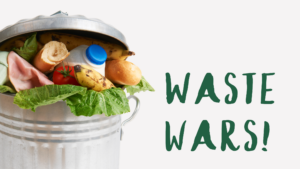This week is Healthy Lunchbox Week (7-13 Feb), which is an initiative created by Nutrition Australia to assist Aussie families in crafting healthy and enjoyable lunches for the first term back at school.
With one in four kids being above a healthy weight[i] and with kids consuming around 30% of their daily food intake at school with most of that coming from their packed lunches[ii]. Ensuring that all kids lunchboxes are filled with nutritious and healthy foods is extremely important.
Studies show that when kids eat healthily their thinking skills, concentration and mental and physical health at school improves, as well as their grades[iii].
What makes a healthy lunch?
A balanced and healthy lunch (for both kids and adults) should contain something from each of the six food groups (fruit, vegetables, dairy, lean meats/meat alternatives, grain foods and water).
And should aim to include: A main item which is the star of the lunchbox (i.e. a sandwich or frittata), a vegetable or fruit snack (i.e. veggie sticks or a whole fruit), a secondary snack from one of the other food categories (i.e. popcorn or nuts) and a bottle of water[iv].
Providing food from these categories will also reduce on the amount of pre-packaged food your child receives, which is good for both their health and the environment.
One of our favourite ways of ensuring that lunches stay interesting is through using the Pick ‘n’ Mix 1-6 method which help you mix up your daily choices.
Another great resource for planning your kid’s lunches is the Cancer Council’s Healthy Lunchbox Builder tool. It’s perfect for whenever you get stuck for a new combination.
Tip for packing a healthy lunchbox
We recommend that you check out our Packing a school lunch blog where you can read about some of our favourite tips for creating a healthy lunchbox. These tips are sure to make your kids excited to open their lunchboxes each and every day and will make their friends beg for trades.
And don’t forget to go to the Health Lunchbox Week website for useful tips, recipes, videos and fact sheets, as well.
Beating the fruit fly outbreaks in SA
At the centre of any healthy lunchbox is fresh produce, but what do you do when you are banned from sending certain types of fresh fruit and vegetables to school? Well, that is the problem that a lot of South Australian parents are facing with the latest fruit fly outbreaks.
We know that there isn’t much information available for parents online in regard to what food they can and can’t send to school with their kids or how to fight the infestation. But don’t worry, we’re here to help…
1. Making sure that you don’t take possibly infected produce to school
Store bought, and home-grown fruits and fruiting vegetables that are susceptible to fruit fly infections are not allowed at school but can be consumed at home. So, make this a breakfast go-to in order to boost kids’ fresh fruit and vegetable intake before they even get to school.
We love this peanut butter and banana on toast idea, you can also add fresh fruit to the cereal bowl or mix up a yoghurt cup. When you’ve got a little extra time this pear pancake recipe looks delicious!
2. Don’t keep fresh food out
Fruit flies primarily lay eggs in over-ripened fruits and vegetables that are stored out in the open air. When conditions are right, they burrow inside and lay their eggs (which if consumed can make you sick). In fact, they can lay up to 100 eggs a day![v]
A way to counter this is to ensure that you do not leave any fresh (especially over-ripened) foods out. You could also puree, can or freeze your fruit to avoid this as well.
3. Cook up a storm
While you can’t take fresh fruit to school, you can cook or bake them into delicious snacks. Use your kids’ favourite fruits in this creative Choose your own adventure muffin recipe. If you have extra tomatoes, get the kids to help you make some tomato passata.
For more easy and healthy fruit and veg recipe ideas, we love the following sites:
But what foods can and can’t your kids take to school?
Foods that fruit flies like and that should NOT be taken to school include (in alphabetical order):
Abius, acerolas, apples, apricots, avocados, babacos, black sapotes, blackberries, blueberries, brazil cherries, breadfruit, caimitos, cape gooseberries, capsicum, carambolas, cashew apples, casimiroas, cherimoyas, cherries, chillies, chokos, citron, coffee berries, cumquats, custard apples, dates, dragon fruit, durian, eggplants, Feijoa, figs, granadillas, grapes, grapefruits, grumichamas, guava, hog plum jaboticaba, jackfruit, jew plums, ju jubes, kiwifruit, lemons, limes, loganberries, longan, loquats, lychees, mandarins, mangoes, mangosteen, medlar, miracle fruit, monstera, nectarines, mulberries, nashi, olives, oranges, passionfruit, pawpaw, peaches, peacharines, pears, pepinos, persimmons, plums, plumcots, pomegranates, prickly pears, pummelo, quinces, rambutan, raspberries, rollinia, rose apples, santols, sapodilla, shaddocks , soursop, star apples, star fruit, strawberries, sweetsops, tamarillos, tangelos, than lungs, tomatoes, vai apples, wax jambu and white sapotes.
Graphic by the Department of Primary Industries and Regions
Foods that the government recommends are safe to be taken to school include:
- Fruits with hard exteriors that fruit flies can’t penetrate like, Pineapple and melons (watermelon, rockmelon, and honeydew) and;
- Vegetables like asparagus, broccoli, carrots, celery, cucumbers (Qukes are perfectly lunchbox sized!), lettuce, mushrooms, snow peas and sugar snap peas.
With only 6.3% of Australian children consuming the recommended daily intake of vegetables[vi], we think that now could be the perfect time to swap some of your kids’ regular fruits snacks for some different types of vegetables and salads instead. For example, trade your kid’s apple or banana for vegie sticks and dip.
For more information of fruit flies in South Australia, head over to the Department of Primary Industries and Regions website or call the fruit fly hotline on 1300 666 010.
We hope that this helped! If you’re looking for even more handy lunchbox tips, check out our ‘Healthy Eating’ page or if you have any lunchbox tips that you would like to share with us, email us at hello@parentsvoice.org.au.
[i] Obesity Evidence Hub, Trends in Australian Children, https://www.obesityevidencehub.org.au/collections/trends/australian-children Accessed 08/02/2021.
[ii] Nutrition Australia, Healthy Lunchbox Week, https://www.healthylunchboxweek.org.au/ Accessed 08/02/2021.
[iii] Wilder Research, Nutrition and Student’s Academic Performance, published: January 2014, https://www.wilder.org/sites/default/files/imports/Cargill_lit_review_1-14.pdf Accessed 08/02/2021.
[iv] Nutrition Australia, What’s for lunch?, published: 2018, https://7b3b124b-6aef-490b-9223-4734bb4c67c1.filesusr.com/ugd/9d5a8d_eb48668fed684c3aa5bcd8f10a988297.pdf Accessed 08/02/2021
[v] Business Insider Australia, Why fruit flies are so hard to kill, published: 23 May 2019, https://www.businessinsider.com.au/fruit-flies-how-to-get-rid-why-hard-to-kill-2019-5?r=US&IR=T Accessed 08/02/2021
[vi] Obesity Evidence Hub, Diet and Exercise in Australian Children, https://www.obesityevidencehub.org.au/collections/trends/children-diet-exercise Accessed 08/02/2021.





